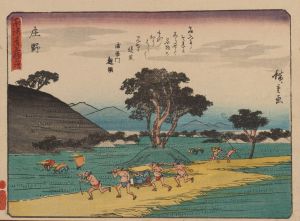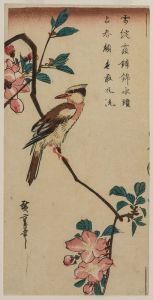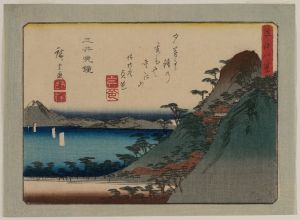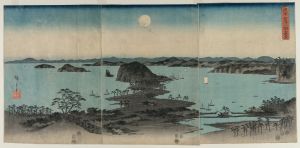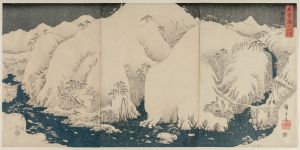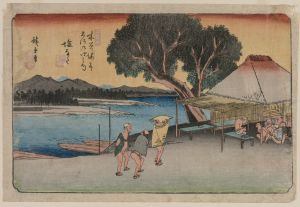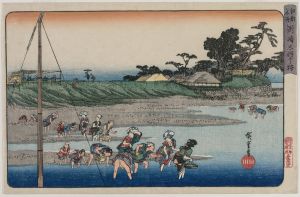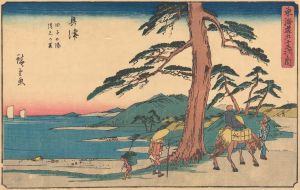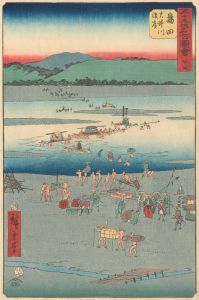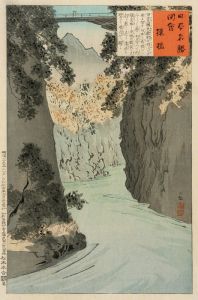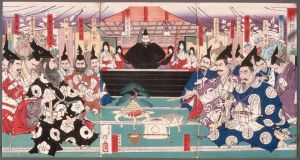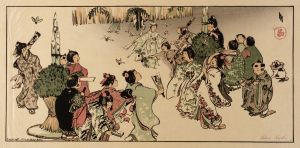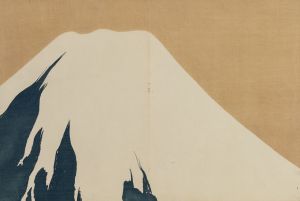
Seki, from the series The Fifty-Three Stations of the Tōkaidō
A hand-painted replica of Andō Hiroshige’s masterpiece Seki, from the series The Fifty-Three Stations of the Tōkaidō, meticulously crafted by professional artists to capture the true essence of the original. Each piece is created with museum-quality canvas and rare mineral pigments, carefully painted by experienced artists with delicate brushstrokes and rich, layered colors to perfectly recreate the texture of the original artwork. Unlike machine-printed reproductions, this hand-painted version brings the painting to life, infused with the artist’s emotions and skill in every stroke. Whether for personal collection or home decoration, it instantly elevates the artistic atmosphere of any space.
"Seki" is one of the woodblock prints from the renowned series "The Fifty-Three Stations of the Tōkaidō" by the Japanese ukiyo-e artist Andō Hiroshige. This series, created in the early 1830s, depicts the various post stations along the Tōkaidō, the main travel and transport route between Edo (modern-day Tokyo) and Kyoto during the Edo period in Japan. The series is celebrated for its detailed and evocative portrayal of the landscapes, daily life, and travel scenes of that era.
The Tōkaidō, meaning "Eastern Sea Road," was one of the five major routes established by the Tokugawa shogunate to connect the capital with other parts of Japan. The route included 53 official post stations where travelers could rest, eat, and find lodging. Hiroshige's series captures the essence of these stations, each with its unique characteristics and scenery.
Seki-juku, commonly referred to simply as Seki, was the 47th station on the Tōkaidō. Located in present-day Kameyama, Mie Prefecture, Seki was known for its strategic importance and bustling activity. It was a significant checkpoint where travelers' permits were inspected, and it also served as a hub for commerce and communication.
In Hiroshige's depiction of Seki, the artist captures the lively atmosphere of the post station. The print typically features travelers and locals engaged in various activities, with the architecture and natural surroundings providing a picturesque backdrop. Hiroshige's use of color, perspective, and composition brings the scene to life, offering viewers a glimpse into the daily experiences of people during the Edo period.
Hiroshige's "The Fifty-Three Stations of the Tōkaidō" series, including the print of Seki, is highly regarded for its artistic and historical significance. The series not only showcases Hiroshige's mastery of the ukiyo-e style but also serves as a valuable record of the cultural and social aspects of Japan during the 19th century. Each print in the series is meticulously crafted, with attention to detail and a keen observation of the natural and human elements that define each location.
The popularity of Hiroshige's Tōkaidō series has endured over the centuries, influencing both Japanese and Western art. His work has been admired for its innovative use of perspective and its ability to convey a sense of movement and atmosphere. The series has also been a source of inspiration for many artists, including the French Impressionists, who were captivated by Hiroshige's approach to landscape and composition.
In summary, "Seki" from "The Fifty-Three Stations of the Tōkaidō" by Andō Hiroshige is a significant work that captures the essence of one of the key post stations along the historic Tōkaidō route. Through his detailed and evocative portrayal, Hiroshige provides a window into the vibrant life and scenery of Edo-period Japan, making this series a treasured part of Japanese art and cultural heritage.





